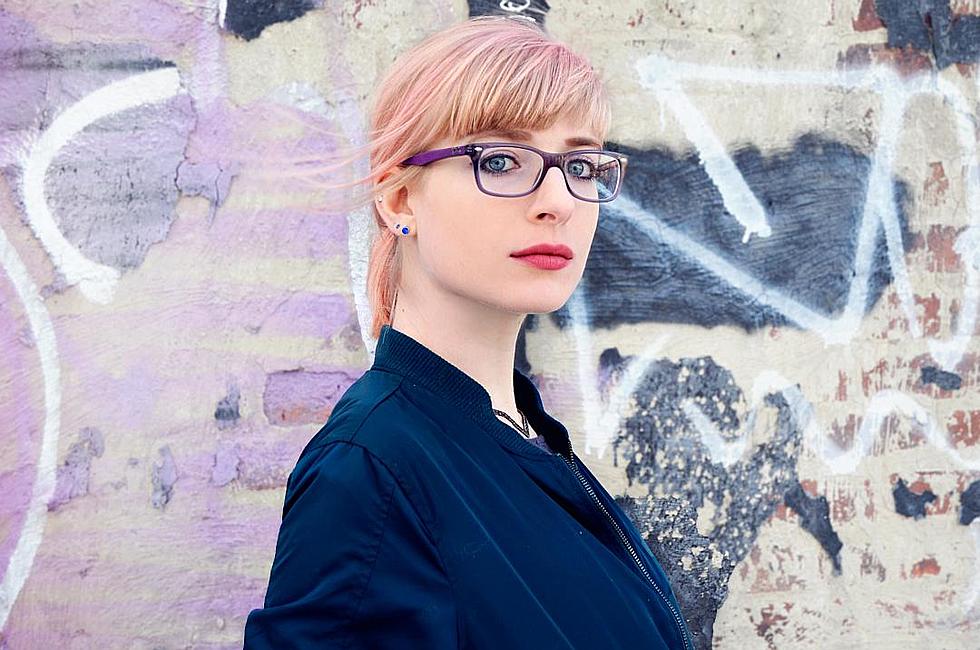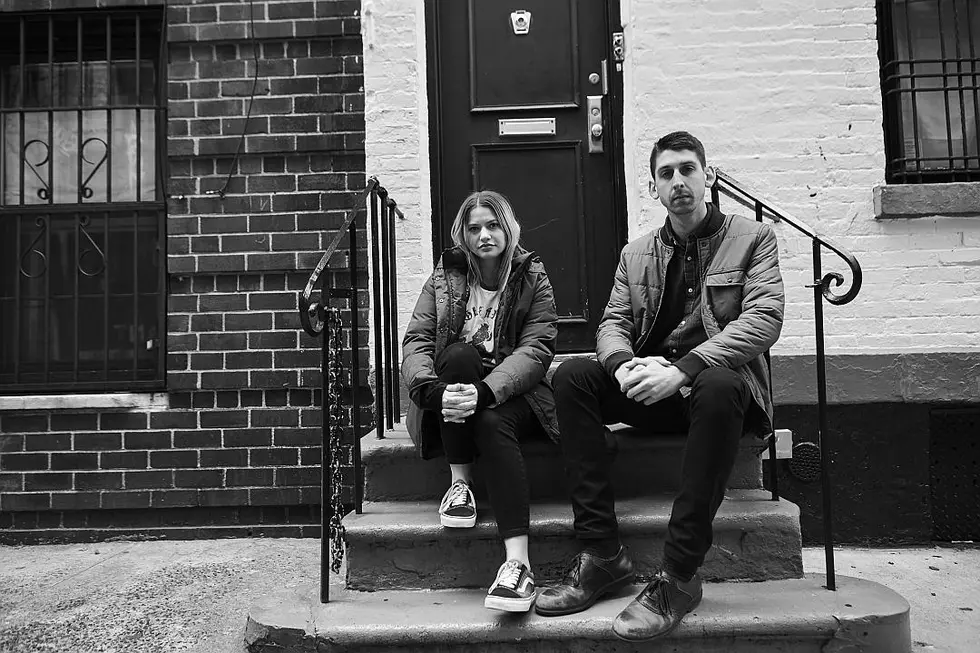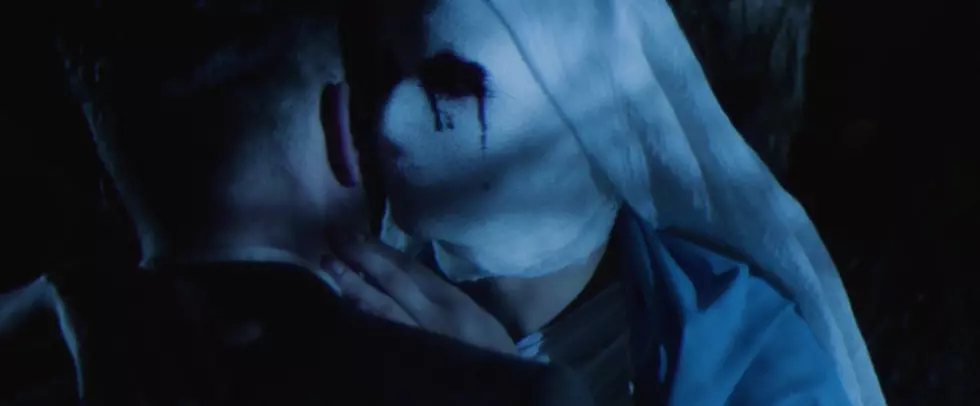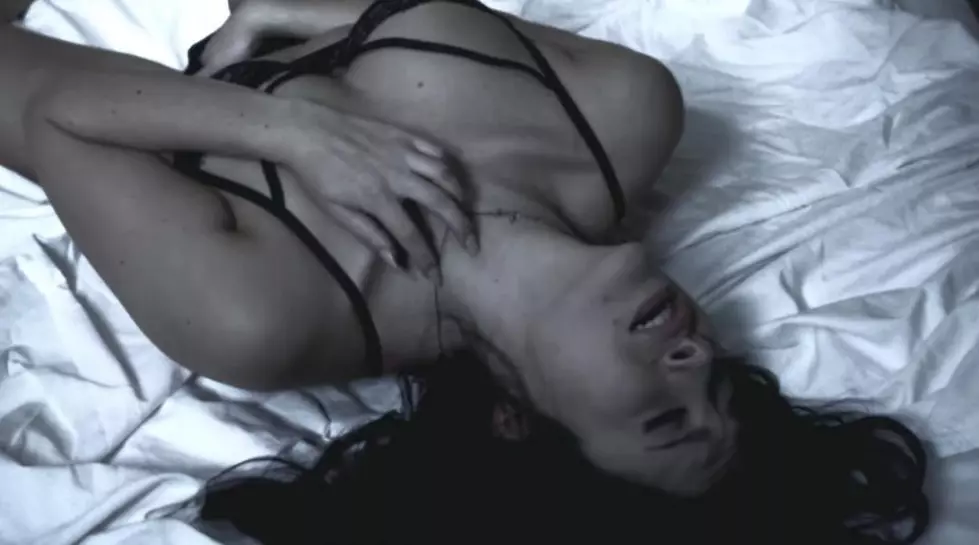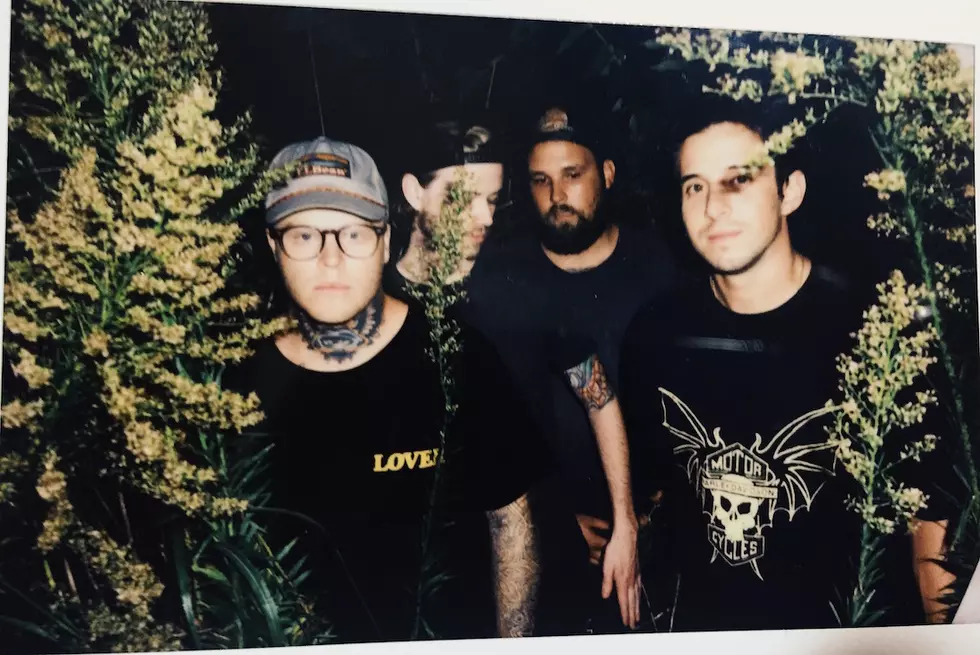
Communities Are Still Key for ‘Banned in D.C.’ Creator Cynthia Connolly
Before this age we live in, where the amount of history available on the American hardcore punk scene of the early 1980s is at the point of overkill, the book Banned in D.C.: Photos and Anecdotes From the D.C. Punk Underground (’79 - ’85) was most certainly an anomaly. Compiled by Cynthia Connolly, Leslie Clague and Sharon Cheslow, and released in 1988, the book provided a lifeline to teenage punk dorks such as myself looking to gain insight on the earlier part of the decade. The infinite amount of times I flipped through that book has rendered certain photos burned into my brain for eternity. Two images in particular — Faith bassist Chris Bald with a cocked fist and John Stabb, the dearly departed vocalist of Government Issue, skanking across the stage for a Minor Threat set while wearing a homemade T.S.O.L. shirt — gave me something to grasp onto from a time I only wished I could have witnessed firsthand.
Last week, I had the distinct pleasure of speaking with Connolly, the book's initial creator, about the legacy of Banned in D.C., her entryway into the D.C. punk scene (having already been a part of L.A. punk) and the importance of punk communities. If you live in NYC, come out to hear her speak and give a slideshow alongside Alec MacKaye (the Untouchables, the Faith, Ignition, the Warmers) at Liberty Hall in the Ace Hotel, located at 20 W. 39th St., on Thursday, March 30 at 7PM. Please RSVP here.
I remember hearing a while back that Banned in D.C. wasn’t going to be reprinted anymore.
Well, the previous edition, the sixth edition, was supposed to be the last edition. When the book was made in 1988, it was during the cusp of desktop publishing, so the files were not digital. The text files were digital, but I had outputted them and then did layout boards with wax, and the negatives were burned to printing plates for offset printing. So, the negatives between 1988 and 2005 had deteriorated. I thought that would be the last edition because I thought there was no way to make the book over that wouldn’t require typing the text all over again, redoing the layout to match the original layout and finding all the photographs, which I had returned to everybody by that point. So, it seemed like the perfect time to retire it.
But there was a friend of mine who really wanted the book reprinted, so we actually took a copy of the book and scanned the photos out of it. With Photoshop being so sophisticated these days, we were able to scan the photos and make them look pretty much like they did in the original printing. So, some of the photos in this new edition are digital files and some of them are not. We then had to typeset everything all over again and lay out the book; plus, I added an afterword.
How long of a process was that?
I would say it took at least three years. I have a full-time job and I’m also an artist, so this was just one of many projects. And honestly, by this point, I had done the book, seen it through many iterations and pushed it through different channels to sell in different places, so it was not like it was a new project; which can be much more exciting experience. But it was interesting to do now in some respects. Some people suggested I write an afterword about how and why I made the book, and I thought that would be kind of boring. But then I started writing it and I actually found it interesting because I got to talk about censorship in the ’80s. Two or three years ago when I was writing that, I didn’t think it was that important, but now it feels like the same thing all over again. History does repeat itself, it seems.
Then, on top of that, another friend suggested I do a slideshow and talk around it since I have all this stuff and he thought people would like to see it. The talks have been really fun because I include different people, since the book isn’t just about my voice; it’s everybody from the D.C. scene’s voice. Sometimes I’ll pull people from the audience to talk. When I was doing one in Denver, Colorado, someone was asking me a question about the Bad Brains that I couldn’t answer, so I pulled someone from the audience that I knew was from D.C. and could probably answer the question better than I could. So, that was pretty fun.
I remember when Banned in D.C. first came out. I saw an ad for it in Maximumrocknroll when I was 16, so I guess it was 1988. At that time, I was always trying to find out more about that early ’80s era of American hardcore punk, and even though it only happened five or so years ago, it was tough to find. You could buy some back issues of old fanzines maybe, but that was about it. And the people who were the pioneers of the scene earlier on did not want to talk about it since they’d moved on by that point. So, when I saw that ad, I was like, “I have to own this.” So, I guess my question is: Did you go into starting the book consciously thinking, “This has to be documented”?
I think I was coming from my perspective of growing up in Los Angeles and then moving to D.C. I just figured everything was like Los Angeles, and then I moved to D.C. and found out not everyplace in the country had a radio show like Rodney on the ROQ or huge venues putting on punk shows. In D.C., it was the kids putting on the shows, and there was something astonishing about that to me. Here were underage kids getting their bands to play bars when they were underage. It was phenomenal. It was almost like those kids had no parents. We lived with our parents, of course, but we were productive and industrious on our own.
I graduated from art school in ’85 and went to San Francisco and met Tim Yohannan and Martin Sprouse, the editors of Maximumrocknroll. When I came back to D.C., they called me and asked if I would move out and work on Maximumrocknroll with them for awhile. At the time, I was going out with Ian MacKaye, and I asked him if he would mind me going out there, because I really wanted to do it. So, I went out there and lived there for seven months and worked on a photo zine they were publishing of photos by Murray Bowles called If Life Is a Bowl of Cherries, What Am I Doing in the Pit? At the time, San Francisco was in a weird place in its punk rock history. They had this great time in the late ’70s with bands like the Avengers and Crime, and it just felt like it was really dead there. That’s when I thought, “I really need to go back to D.C. and do a book about the punk scene.” That part from ’81 to ’82 in D.C. was still so explosive and significant and fascinating to me in how the word spread about the music. It was almost like the music distributed itself in some sort of tidal wave. I just remember being at certain shows at that time and thinking, “How do these people know about this?” and “Why is this happening?” It was still totally fascinating to me that these kids wanted to do something and see something different happen in their town. There was no intention of changing the world, but we were changing our own world. It was a good example of any micro-community in that if you change your surroundings, it can have an impact on both your surroundings and communities outside of that.
I was in San Francisco thinking that I had to go back and do this book because if I didn’t do it, someone else will, and I’ll be disappointed if it doesn’t come from the perspective of the kids who were there. I didn’t want to see something with a bunch of text and theories.
Your trajectory from L.A. to D.C. is interesting. At that time, L.A. certainly formed the sound that would be American hardcore punk, but D.C. is known for creating the aesthetic that forms around it.
I think the first show I saw when I moved to D.C. was Adam and the Ants at the Bayou. The two people I had met so far in D.C. who were into punk made fun of me for going to that show; which would be Ian and Alec MacKaye. But then I went to a show in a girl named Janelle’s basement that was super fun, and you knew every single person there. In Los Angeles, you knew some people, but most of the kids who were into punk were living in vacant buildings downtown, and there was a heavy drug scene. D.C. had this youthful naivete, but also a seriousness about it in being the youth that you were.
Since the D.C. scene was so small, did it feel like something you were immediately entrenched in?
Yes. There was an article in The Washington Post in January of 1981 about the D.C. punk scene and how it all revolved around Georgetown, so my sister and I went down there and met Henry Rollins while he was working at Häagen-Dazs and Danny Ingram working at Penguin Feather Records. The downtown area was full of abandoned buildings rotting away and still going through the white flight that started in the ’60s. There weren’t many economically vibrant places to hang out. I mention in the afterword about going to see a show at the Los Angeles County Museum of Art on the Russian avant-garde before moving to D.C., and how it resonated with me and made me want to be a part of a community. Being in a community to me wasn’t just hanging out and shooting the shit, so I was immediately involved when I got to D.C. I helped Ian lay out the lyric sheet for the first Minor Threat 7" in the summer of 1981, and then we hung out in the basement cutting and gluing sleeves. I remember my mom saying to me, “You know, your time is worth money.” [Laughs]
Well, look now! Your involvement in that is worth way more than anything Ian could have paid you. You were involved in the last burst of folk art in America.
That’s an interesting take on it. Do you really think that? There has to be something else.
It’s either that or hip-hop.
Don’t forget go-go music in D.C.! Would you say that because the internet changed the way we exchange our culture? Do you think it’s because we have too much information?
There’s no real work in finding out about anything anymore. Cultures aren’t allowed to percolate in this day and age. Things just happen, then explode, and people move on to the next thing. With that initial period of the American hardcore thing, it seemed like something that could have only happened in that place in time.
There were only a few books before that about American punk, and I felt a need to get it out there for somewhat selfish reasons. I wanted to have something for myself and the people who were involved in the D.C. punk scene to remember it by, but I also wanted to capture that explosive moment and how it shifted in the city, and how all these communities started to connect in other cities.
Since we’re now in a period where there’s a glut of books about the era of American hardcore punk that Banned in D.C. covers, I wonder if you’ve read any of them.
There’s so many books, and I honestly haven’t read any of them. Maybe when I get older and have the time, I’ll read them. For me, there’s so much happening culturally now that I don’t want to look back. I don’t like spending a lot of time on the past, which is a funny thing since I’m doing these talks. But for me, doing these talks is a way to pass on the energy and message that, no matter what moment in time we live in, we create our own set scene. We talked about social media before, and I don’t think of it as a good form of support. Being there in the physical space and place makes a bigger impact. I think all these books are being made because — as you said — this was one of the last folk art movements, and people want to hold onto it, and young people of today still see that music as a form of influence and want to read about it.
In regards to the books I’ve written, I’ve had people come up to me and say, “You know, I wish you never wrote these books. It was better when this was all a secret.” Have you ever had anyone from the D.C. punk scene say anything similar to you?
Not really, but the thing with D.C. is, there is always someone who has some problem with the way something is presented because everyone has a different perspective on how things happened. Scream didn’t get very well-documented in the book, but that’s because the guy who had a lot of photographs of them never got back to me. That’s why there’s a full-page photo of Pete Stahl in the book.
That’s funny; like one large photo of the band would make up for the lack of more photos of them on the book!
Kind of! But for me, it was two years of solid work where I didn’t know what I was doing. There were no other books around for me to use as an example. The idea of collecting stories was obvious to me because D.C. in particular has a history of storytelling. I don’t know if it comes from an African American tradition, but it was pretty prevalent in D.C. If you hung out at shows, people would tell stories of other shows and laugh about it. It was never-ending. I think that element of storytelling got me out of a lot of trouble I would have been in if I wrote about it myself.
I was always curious about the way the book ends. When you were assembling it, did you map out in your head where you would stop in terms of where the D.C. punk scene was at the time?
Kind of. At first, the book seemed to end when the Revolution Summer in D.C. started off, but then we got that picture of One Last Wish, which ends the book, and that’s from ’86. It was such a great photo, and felt to me like 1981 revised. We didn’t want the book to come off like everything fizzled, but more like that there was more to come.
What are some of the artifacts you show when you do the accompanying slideshow?
One fun letter that Anthony [Pappalardo, organizer of the New York event] has is a letter Glenn Danzig sent me asking for photos back then. I want to use that as a tool to show community and how it’s important to contribute to that community. People call that DIY now, but we didn’t call it that then; it just was what is was.
Would you yourself go to an event like this?
No, I don’t go to stuff like this. But for me, it's not about talking about the past. It’s about talking of the past, what I learned from it and how that can be applied today. It's basically what I do still in my life with the community of friends I have in the art scene I’m involved in. That’s what makes a scene, and I don’t think people understand that still to this day. It's a simple application!
More From CLRVYNT
